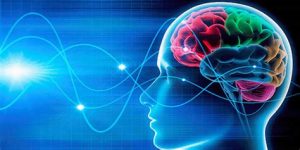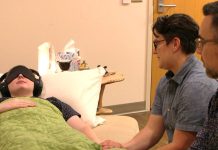The famous existential psychologist, author, and modern philosopher Rollo May once said, “Depression is the inability to construct a future.” For people who suffer from Major Depressive Disorder (MDD), this is likely true. Depression is not just a feeling of sadness, and it is more than a list of symptoms from the DSM-5.
For people who suffer from MDD, it is a torturous way of life, even if they don’t consciously choose it. Elizabeth Lee Wurtzel, an American writer and journalist best known for the confessional memoir Prozac Nation, described depression this way: “That’s the thing about depression: A human being can survive almost anything, as long as she sees the end in sight. But depression is so insidious, and it compounds daily, that it’s impossible to ever see the end. The fog is like a cage without a key.”
And despite the creation of a host of antidepressants over the course of the past five or so decades, many people still suffer from a form of untreatable depression, known as Treatment Resistant Depression (TRD), resigning them to a life sentence full of bleakness and despair.
And it’s not a small percentage, either. Research shows that “[T]reatment resistance occurs commonly in up to 30% of the treated MDD patient population.” Given that MDD affects around 17.3 million American adults, this translates into approximately 5.2 million people who may never find a way to construct their future. To put that in perspective, that’s roughly the population of South Carolina, the 23rd largest state in the Union.
For these people, current treatments, mainly SSRIs [Selective Serotonin Reuptake Inhibitors], are not helpful at all, and we haven’t come up with anything novel in quite some time. As the researchers Sally E. Meikle and Paul Liknaitzky point out, “There is no doubt that we need new treatment options for mental illnesses, with novel mechanisms of action. In depression, we have been flogging the monoamine reuptake inhibition horse for decades now.”
But scientists, aided by a growing chorus of mental-health advocates, may have found the key to freedom, the path to psychological salvation, through the use of psilocybin, the prodrug compound that induces psychedelic experiences. And though we are just in the beginning stages of psilocybin therapy, the future looks bright. The best part is that unlike traditional pharmaceutical therapy, which can take weeks, if not months of often unrewarding trials of antidepressant medications, psychedelic-assisted therapy promises not only efficacy, but rapid results.
Johns Hopkins Medicine researchers conducted a small study of adults with major depression, and found “. . . that two doses of the psychedelic substance psilocybin, given with supportive psychotherapy, produced rapid and large reductions in depressive symptoms, with most participants showing improvement and half of study participants achieving remission through the four-week follow-up.”
In comparison to the long haul involved with standard antidepressant pharmaceutical therapy, psychedelic-assisted therapy may allow patients to recover in less than half the time, with a much greater chance of success while diminishing the negative side-effect profiles.
Alan Davis, adjunct assistant professor of psychiatry and behavioral sciences at the Johns Hopkins University School of Medicine, is optimistic, stating: “The magnitude of the effect we saw was about four times larger than what clinical trials have shown for traditional antidepressants on the market. Because most other depression treatments take weeks or months to work and may have undesirable effects, this could be a game changer if these findings hold up in future ‘gold-standard’ placebo-controlled clinical trials.”
Another application of psilocybin therapy is for people with terminal diseases who are struggling with stressful life-threatening diagnoses or end-of-life issues. In a 2016 study regarding the efficacy of both small and large doses of psilocybin in reducing depression and anxiety of cancer patients published in the Journal of Psychopharmacology, researchers concluded:
The high dose produced significantly greater ratings of positive persisting effects on attitudes about life and self, mood changes, social effects, behavior, and spirituality. These effects were sustained at 6-month follow-up. Negative ratings of these dimensions were low and not significantly different between conditions. The high-dose experiences were rated as producing significantly greater personal meaning, spiritual significance and increased well-being or life satisfaction, with differences sustained at 6 months.

So, what makes psilocybin so effective at resolving depressive states? The answer may lie in the way the brain functions with regard to change. The change I speak of is neuroplasticity. Neuroplasticity is the term used to describe pretty much any change in the way brain cells (neurons) connect to each other, grow, and communicate.
A specific aspect of neuroplasticity is neurogenesis, which is the specific term for the growth of new brain cells. In reality, neuroplasticity and neurogenesis are responsible for several different patterns of growth in the brain, and current research indicates the following types of growth:
- Changes in the size of individual neurons
- Changes in the number of connections between neurons
- Changes in where neurons connect to each other
- The growth of brand new neurons (neurogenesis)
- Changes in the strength of the connections between neurons (also known as synaptic plasticity)
- Changes in the response of neurons to signals
Although there are many places in the brain that can exhibit neuroplasticity, one particular area, the hippocampus, stands out. In addition to playing a major role in memory and learning, the hippocampus is part of the limbic system, part of the cerebral cortex. The hippocampus is the structure that ”. . . is concerned with hunger, motivation, sex drive, mood, pain, pleasure, appetite, and memory.”
All of this deeply processed stimuli causes changes, or neuroplasticity, in the hippocampus. And this is where it gets interesting, because there is a connection between neuroplasticity of the hippocampus, and depression. Emerging research points to the idea that “Disruption of hippocampal function, including the capacity for neuroplasticity, could contribute to several aspects of major depression.”
In other words, depression leads to a lack of neurogenesis and neuroplasticity, a key characteristic of a healthy hippocampus and limbic system. Another way of looking at that is that an already impaired hippocampus and limbic system leads to a lack of neuroplasticity and neurogenesis, thus leading to depression. Regardless of which one is the origin, psilocybin seems to help!
Alex Kwan, an associate professor of psychiatry at Yale University, led a team of researchers to explore the effects of psilocybin on the brains of mice. Kwan and his team concluded, “Psychedelics like psilocybin can give mystical-like experiences and have exciting therapeutic potentials, but we still don’t know much about what they do to the brain. Here we study what psilocybin does in a mouse brain. The data suggest that there is a growth of new neuronal connections in mice after one dose of psilocybin. This happened in the frontal cortex, a brain region important for mood and cognition.”
Other researchers have corroborated these types of findings. In another study, Dr. Franz X. Vollenweider, Director of the Neuropsychopharmacology and Brain Imaging Unit, and Professor of Psychiatry in the School of Medicine, University of Zurich, used neuroimaging to study the effects of psychedelics and found that the data from these images, “. . . show that psychedelics modulate neural circuits that have been implicated in mood and affective disorders, and can reduce the clinical symptoms of these disorders. These findings raise the possibility that research into psychedelics might identify novel therapeutic mechanisms and approaches that are based on glutamate-driven neuroplasticity.”
Interestingly, glutamate has connections to serotonin, the primary target neurotransmitter of SSRIs, used to treat depression. Serotonin, in addition to “acting on postsynaptic and presynaptic receptors, is involved in cognition, mood, impulse control and motor functions,” functions also controlled by the hippocampus. Serotonin also plays a modulating, or controlling role, and one of the functions it modulates is the release of glutamate, thus tying it into the neuroplastic nature of the hippocampus. The upshot is that psilocybin increases plasticity via the serotonin-glutamate axis, thus leading to the lifting of depression.
And as I alluded to earlier, in addition to creating the changes to the brain necessary to overcome depression, psilocybin creates these changes rapidly. This is important, and I speak from personal experience, because waiting for antidepressants to kick in, even while battling a host of undesirable side-effects, causes many people to give up and eventually discontinue using them.
As Meikle and Liknaitzky argue, “While conventional antidepressants induce changes gradually, psilocybin appears to produce an intense acute state of increased neuroplasticity and altered functional connectivity. This state may offer an invaluable opportunity for psychotherapy to guide and solidify these changes. This concept of pharmacotherapy and psychotherapy working synergistically is gaining traction within psychiatry and the properties of psilocybin may place it at the forefront of this.”
There is also a moral component to the current research and advocacy for the use of psychedelics for therapeutic purposes. David Baumeister, Consultant Psychiatrist at Princess Royal University Hospital, Orpington,UK and Cognition, and expert in the field of schizophrenia, frames this moral imperative of no longer denying people the help potentially afforded by psilocybin and other similar compounds:
Hallucinogens have been employed entheogenically in human spiritual practice for several millennia, often in shamanistic approaches to healing or as a gateway for communication with deities. Despite, or perhaps in reaction to, this rich tradition, judicial processes in the 1960s and 1970s criminalized these substances without a clear scientific rationale, but more as a societal and political response to an emerged counter-culture. A historical legacy of the United Nations Convention on Psychotropic Substances has been significant obstacles and hurdles for scientific research using and investigating hallucinogens, whose neuropharmacology have remained incompletely understood
Recently, it has been argued that the scientific community itself must lead the case for change in policies, as current drug laws severely limit scientific exploration of both neurobiological mechanisms and clinical effects that may prove valuable in the understanding of consciousness and mental illness, and offer novel therapies.
On a more personal dimension, Wurtzel makes a profound plea: “I start to think there really is no cure for depression, that happiness is an ongoing battle, and I wonder if it isn’t one I’ll have to fight for as long as I live. I wonder if it’s worth it.” It’s time to answer Wurtzel’s call for progress, and psilocybin should be a part of it. Let’s get busy.






